How Can a Mold Tilter Improve Safety and Efficiency for Colombian Manufacturers?
Handling heavy molds, dies, or coils in a busy manufacturing plant is a constant source of stress. In workshops across Colombia, I've seen teams use overhead cranes and chains to flip these massive objects. Every time they do it, there's a risk. A sudden slip, a moment of imbalance, and you could be facing a serious accident, a damaged multi-thousand-dollar mold, and a production line that grinds to a halt. This slow, dangerous process silently eats away at your productivity and profits. But there is a much better way. A dedicated mold tilter is a simple, powerful, and engineered solution designed to solve this exact problem, making your workshop safer and more efficient almost overnight.
A mold tilter improves safety for Colombian manufacturers by providing a stable, controlled platform to rotate heavy items, which removes the need for risky manual handling or unstable crane-based flipping. This prevents accidents and protects workers. It boosts efficiency by dramatically cutting the time and labor needed for mold maintenance and changeovers. This means less downtime and higher production output.
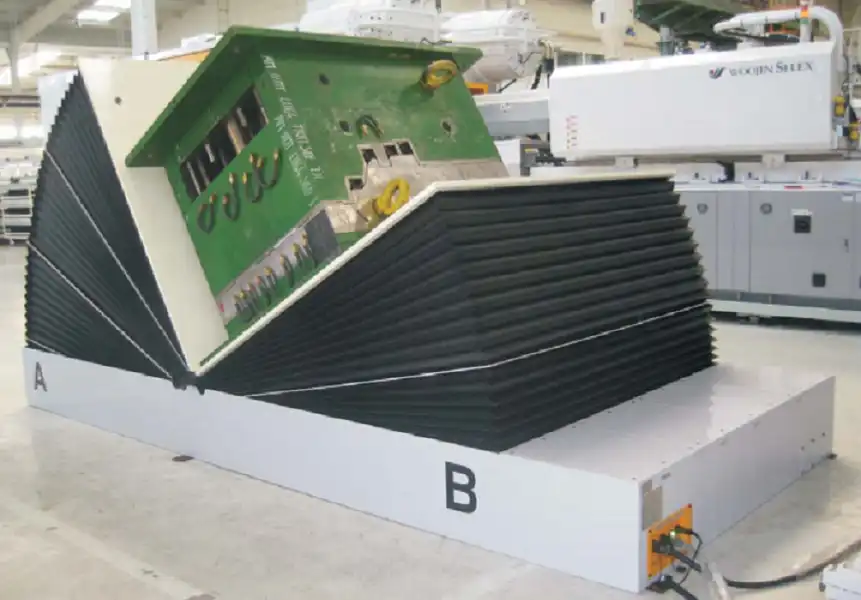
I have spent my entire career in the packing machine industry. I started as an engineer on the factory floor and eventually built my own successful company. I understand the pressure to keep production moving and to keep your people safe. That is why I believe so strongly in smart equipment investments. You might be wondering if a mold tilter is really worth the cost for your specific operation. Let's look closely at the real-world benefits. We will break down how this one machine can have a huge impact on your business.
What are the direct safety risks a mold tilter eliminates?
Every time your team uses a crane and chains to flip a heavy mold, you are taking a gamble. The center of gravity shifts unpredictably. The chains can slip. It is a high-risk operation that relies too much on luck and operator skill. I have heard too many stories from factory owners about near-misses that could have been catastrophic. A heavy mold that drops can cause life-changing injuries and damage equipment beyond repair. The thought of this keeps managers awake at night. A mold tilter is designed to remove this gamble. It secures the load on a stable table and uses mechanical or hydraulic power to perform a smooth, controlled rotation. It turns a high-risk task into a routine, safe procedure.
A mold tilter directly eliminates safety risks by replacing unstable crane-and-chain flipping with a controlled, secure mechanical process. This prevents sudden load shifts, dropped molds, and uncontrolled movements. It protects workers from crush injuries and also safeguards valuable equipment from expensive damage.
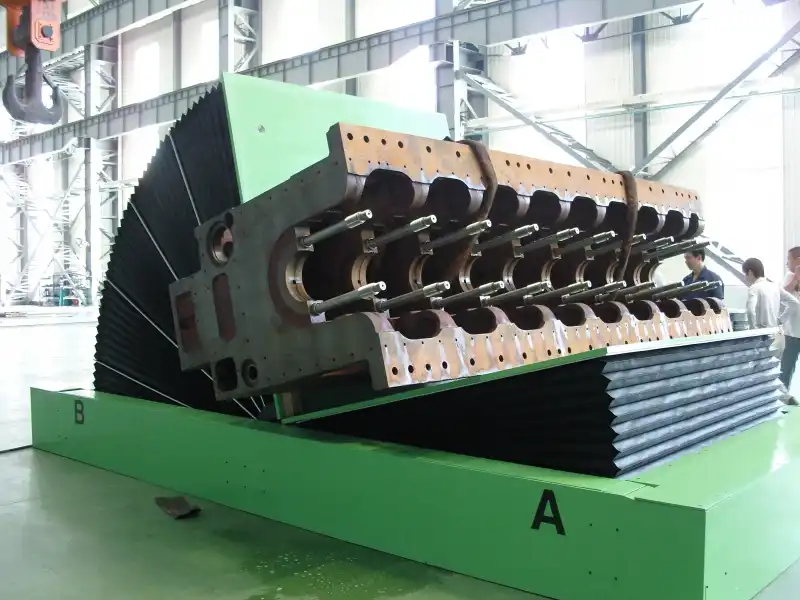
The Dangers of Traditional Methods
Early in my career, I was on a factory floor when a five-ton die, suspended by chains from a crane, started to slip. The shift was only a few centimeters, but everyone in the area froze. The operators managed to lower it safely, but that image has never left me. It showed me how quickly a normal day can turn into a disaster. This is the reality of traditional methods. Using cranes or forklifts to turn heavy objects was never what those machines were designed for. They are lifting tools, not rotating tools. The risk is built into the process. This is not just about major accidents. It also includes smaller, more frequent injuries like muscle strains from workers trying to manually guide the heavy, swinging load. These small injuries also lead to lost workdays and reduced team morale.
How a Mold Tilter Creates a Safe Zone
A mold tilter changes the entire dynamic. It creates a dedicated, engineered safe zone for a dangerous task. Instead of the load being unstable in mid-air, it is securely fastened to a large, flat table. The rotation is handled by a powerful, reliable system—either mechanical gears or smooth hydraulics. The operator stands at a safe distance, using a simple control panel or remote. There is no guesswork. There is no manual pushing or pulling. The machine does all the work. This systematic approach is the foundation of modern industrial safety. It is about identifying a risk and engineering a solution that removes the human element from the most dangerous part of the task. For a manager in a Colombian facility, this means fewer safety incidents, lower insurance premiums, and a workforce that feels valued and protected.
| Method | Key Risks | Safety Level |
|---|---|---|
| Crane & Chains | Dropping the load, uncontrolled swinging, chain failure, crush injuries. | Very Low |
| Forklift & Pushing | Tipping the forklift, damaging the mold, operator strain, sudden drops. | Low |
| Manual Team Lift | Not feasible for heavy molds; severe risk of crush/strain injuries. | Extremely Low |
| Mold Tilter | Load securely fastened; controlled, predictable motion; remote operation. | Very High |
How does a mold tilter tangibly increase production efficiency?
Think about a typical mold changeover. Your production line stops. A maintenance team is called. They spend time carefully rigging chains to a heavy mold. They slowly lift and attempt to flip it with an overhead crane. The whole process is slow, requires multiple people, and ties up the crane, which might be needed elsewhere. This downtime is a direct hit to your output. Every minute your machine is not making parts is a minute you are losing money. For manufacturers in Colombia trying to compete, these delays can affect your ability to deliver on time to clients in Bogotá, Medellín, or Cali. A mold tilter can turn this hours-long process into a simple, quick task. What once took a team of three people two hours can now be done by one person in about fifteen minutes.
A mold tilter tangibly increases production efficiency by reducing the time for mold rotation from hours to minutes. This speed accelerates mold maintenance, repairs, and changeovers. It minimizes machine downtime, increases throughput, and allows for much more flexible production scheduling.
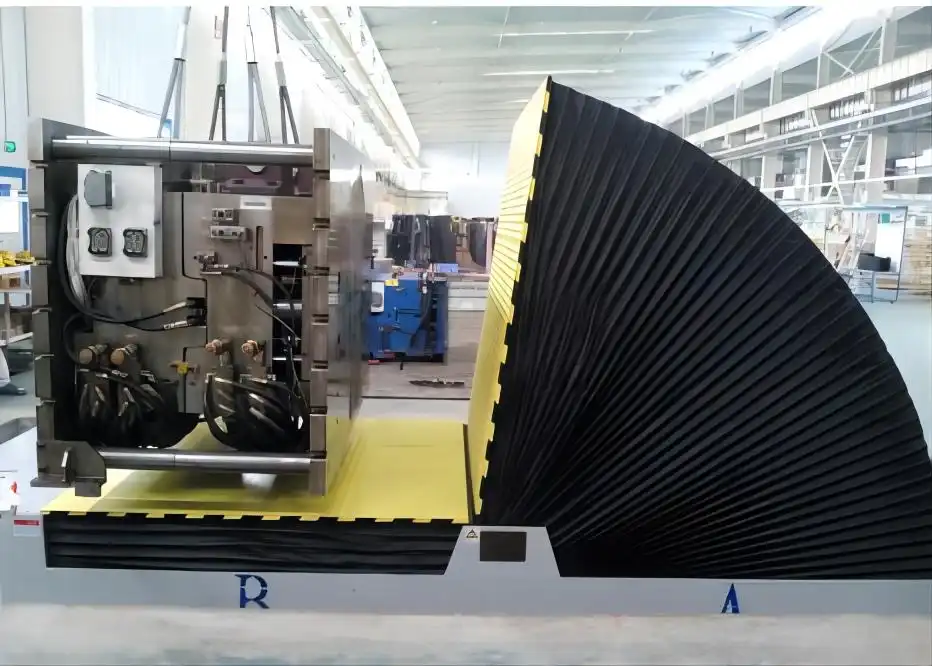
Analyzing the Time Cost of Manual Tilting
Let's break down the time spent in a manual process. First, workers need to find and inspect the right chains and rigging gear. Then, they have to carefully attach them to the mold. The crane operator has to lift it slowly. Other workers try to guide it as it turns, which is inefficient and dangerous. After the turn, it has to be lowered and unhooked. Each step is filled with small delays and checks for safety. This all adds up. I have seen factories where a simple mold inspection can take half a day, with most of that time spent just on handling the mold. This is a huge source of hidden waste. As a factory owner myself, I learned that efficiency is not just about making machines run faster. It is about eliminating the time spent not producing.
The Ripple Effect of Faster Changeovers
The benefit of a faster changeover goes beyond just that one machine. It has a ripple effect across your entire production floor. When changeovers are quick, you can afford to run smaller batches more economically. This makes your business more agile and responsive to customer demand. It also frees up your skilled maintenance team to work on other important tasks instead of just wrestling with heavy molds. Furthermore, it frees up your overhead crane. In many workshops, the crane is a major bottleneck. When one team is using it for a slow mold flip, other teams are waiting. A mold tilter works independently, freeing up this critical piece of equipment. For a forward-thinking factory owner like Javier Morales, who aims for 95% equipment uptime, these efficiency gains are not just minor improvements. They are a core part of the strategy to reduce waste, increase capacity, and improve overall profitability.
| Task Component | Time with Crane (Approx.) | Time with Mold Tilter (Approx.) |
|---|---|---|
| Preparation & Rigging | 20-30 minutes | 2-3 minutes (place on table) |
| The Actual Rotation | 10-15 minutes (slow & careful) | 1-2 minutes |
| Positioning & Unrigging | 15-20 minutes | 2-3 minutes (remove from table) |
| Total Time | 45-65 minutes | 5-8 minutes |
| Labor Required | 2-3 people + Crane Operator | 1 person |
What is the real ROI of a mold tilter for a Colombian business?
As a business owner, every investment has to be justified. You need to know it will pay for itself and contribute to your bottom line. The upfront cost of a machine is easy to see on an invoice. But the real cost of not having the right equipment is often hidden. Think about the potential cost of one serious workplace accident. The medical bills, the legal fees, the government fines, the stop-work orders. It can be devastating. Or consider the cost of a damaged mold. Some complex molds can cost tens or even hundreds of thousands of dollars. One drop can ruin it. When you look at it this way, a mold tilter is not a cost. It is a form of insurance that also happens to make you more productive every single day. The Return on Investment (ROI) is powerful because it comes from both cost avoidance and efficiency gains.
The real ROI of a mold tilter for a Colombian business comes from three key areas. First, it prevents the massive costs associated with accidents. Second, it increases revenue through higher production uptime. Third, it extends the life of expensive molds by preventing damage during handling.
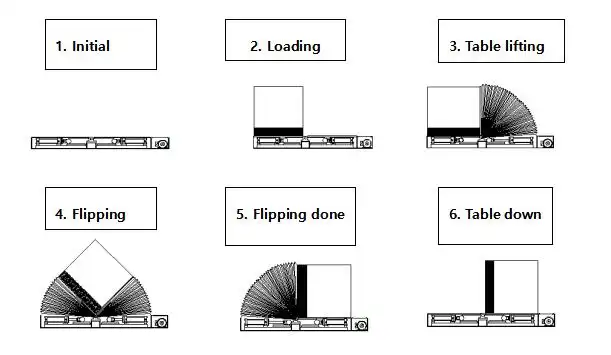
Calculating the "Cost of Inaction"
The biggest financial risk is inaction. Let's imagine a scenario. A 4-ton mold is dropped during a manual flip. A worker is injured, leading to a year of lost work time and significant compensation costs. The mold itself is cracked and needs a $50,000 repair. The production line is down for two days while the incident is investigated and the area is cleared, resulting in $80,000 of lost production. The total cost of this single incident can easily exceed the price of a brand-new mold tilter. When I established my own factory, I had to be very careful with every dollar. But I quickly learned that the smartest investments were the ones that eliminated these kinds of catastrophic risks. A mold tilter is one of those smart investments. It directly addresses a known point of failure in many industrial processes.
Quantifying the Gains in Efficiency
The other side of the ROI calculation is pure profit from efficiency. Let's use a conservative example. If a mold tilter saves you just one hour of downtime per day, five days a week. That is over 250 hours a year. Now, multiply that by your factory's hourly operating profit. The number adds up very quickly. This is real money that goes straight to your bottom line. It's the kind of measurable improvement that business owners who focus on data, like Javier Morales, can appreciate. He wants to lower operating costs by 8%. Eliminating hundreds of hours of wasted time and labor is a direct path to achieving that goal. This isn't theoretical; it's a simple calculation of time saved and money earned.
| ROI Factor | Description | Financial Impact |
|---|---|---|
| Accident Prevention | Avoids costs of injury, fines, and legal fees. | High (Cost Savings) |
| Asset Protection | Prevents damage to expensive molds and dies. | High (Cost Savings) |
| Increased Uptime | Less downtime for maintenance/changeover means more production. | High (Revenue Gain) |
| Labor Savings | Reduces the number of staff required for the task. | Medium (Cost Savings) |
| Insurance Premiums | A safer workshop can lead to lower insurance costs. | Medium (Cost Savings) |
How do you choose the right mold tilter for your specific needs?
So, you are convinced that a mold tilter is a smart move for your facility. But when you start looking, you see different options. There are 90-degree tilters, 180-degree tilters, mechanical screw-jack models, and hydraulic versions. Choosing the wrong one can be a frustrating and costly mistake. You might buy a machine that is too small for your biggest mold, or one that does not fit the workflow on your factory floor. Making the right choice is not complicated, but it requires you to answer a few simple questions about your specific operation. The goal is to match the machine's capabilities directly to your needs.
To choose the right mold tilter, you must assess four key factors. First, the maximum weight and the physical dimensions of your molds. Second, the tilting angle you require for your process, like 90 degrees for maintenance or 180 degrees for a full flip. Third, the power source you have available. And fourth, the existing layout and space in your facility.
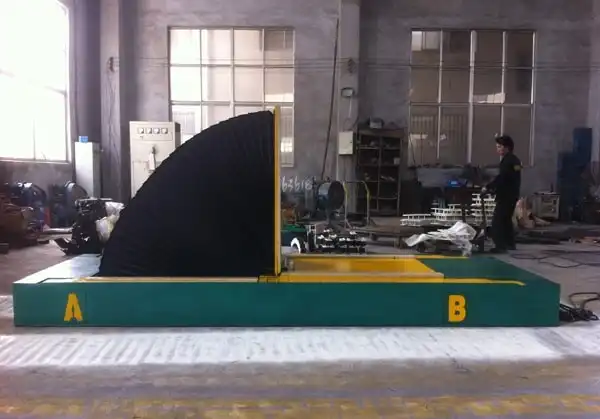
Step 1: Define Your Load
The first step is always to understand what you need to move. You must know the weight of your heaviest mold or coil. It is a good practice to choose a tilter with a capacity at least 20% higher than your heaviest load to provide a safe margin. Then, measure the dimensions: the length, width, and height. This determines the size of the tilting table you will need. The table must be large enough to support your entire object securely. When I work with clients, this is the very first information I ask for. Without it, everything else is just a guess. You have to start with accurate data about your load.
Step 2: Determine Your Process Needs
Next, think about what you are trying to do. Why do you need to tilt the mold? If you only need to open a mold to clean or maintain one half, a 90-degree tilter is usually perfect. It turns the mold on its side, providing easy access. If you need to completely flip the mold over, perhaps to move it from one machine to another or to work on the bottom side, then you will need a 180-degree tilter. Also, consider the power system. Mechanical screw-jack tilters are robust and require less maintenance, making them great for many standard applications. Hydraulic systems offer a smoother motion and can handle extremely heavy or off-center loads, but they require more maintenance.
Step 3: Consider Your Facility
Finally, look at your workshop. Where will the tilter go? You need to measure the floor space available to make sure the machine and its working area will fit. Think about how materials will flow to and from the tilter. Will you use an overhead crane to load it, or a forklift? This will determine the best placement. Also, check your available power supply. Do you have the correct voltage for an electric motor, or do you have a hydraulic power pack nearby? This is where a true supplier acts as a partner. They should help you think through these questions to ensure the machine integrates perfectly into your existing operations. It is a key part of the service I believe in providing at SHJLPACK.
| Factor to Consider | Key Question to Ask Yourself | Why It Matters |
|---|---|---|
| Weight Capacity | What is the absolute weight of our heaviest mold? | Safety and machine longevity. Must exceed max load. |
| Table Dimensions | What are the L x W x H of our largest mold? | The mold must fit completely and securely on the table. |
| Tilting Angle | Do we need to access the side (90°) or flip it over (180°)? | Matches the machine's function to your specific task. |
| Power System | Do we prefer low-maintenance mechanical or smooth hydraulic? | Depends on load, usage frequency, and maintenance preference. |
| Footprint | How much floor space do we have for the machine? | Ensures the machine fits in your workshop layout. |
| Loading Method | Will we load with a crane from above or a forklift from the side? | Affects machine placement and optional features. |
Conclusion
A mold tilter is more than equipment. It is a strategic investment in a safer, more efficient, and more profitable manufacturing future for your Colombian facility.





